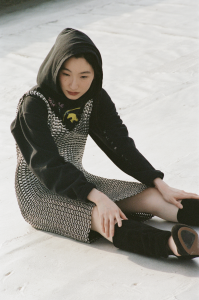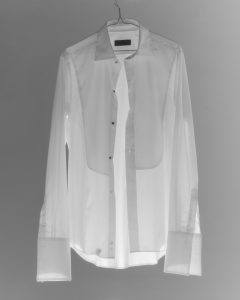David Hellqvist sits down with French footwear designer Michel Perry and the young London creative to discuss British sub-cultures and laser-etched leather ahead of their collaborative capsule collection
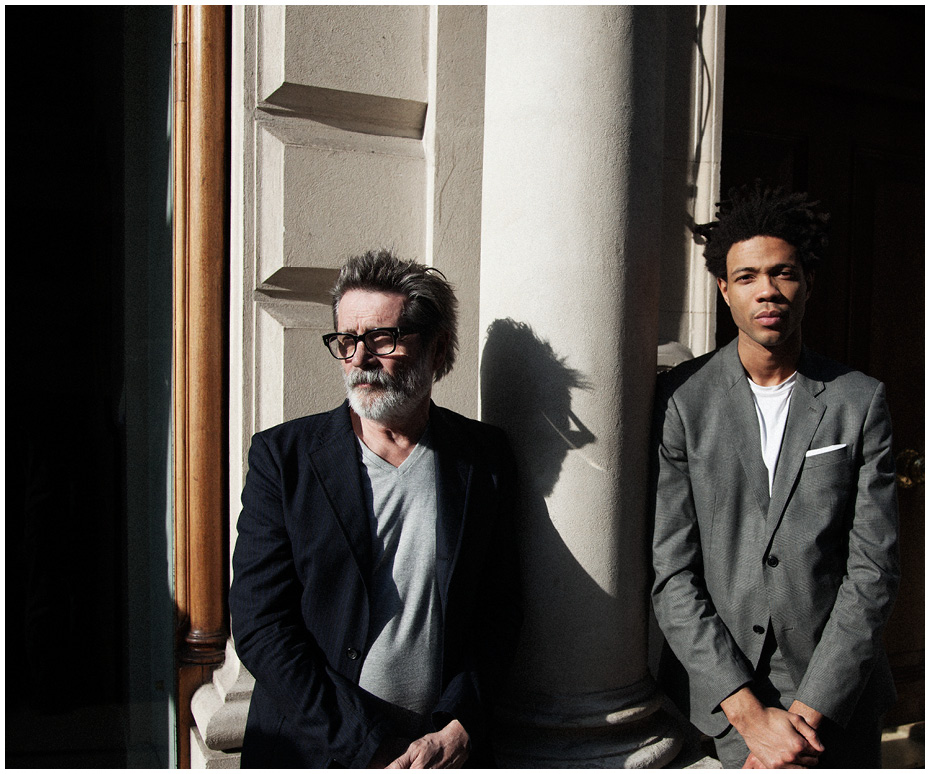
Although they’re from different generations, born in two separate countries, and can’t even communicate in a common language, Michel Perry and Charlie Casely-Hayford share one quality that unites them. They both know and love classic footwear crafted with equal parts skill and attitude. The pair boasts an unquestionable style and a sartorial confidence that many of us lack, and it was that bond that brought the younger half of the Casely-Hayford duo and the traditional French footwear brand, J.M. Weston, together. The resulting capsule collection combines the energy and attitude of British sub-cultures with the heritage of one of Europe’s finest cobblers, dating back to the footwear factory Édouard Blanchard set up in 1891. “The quality of their shoes and the craftsmanship, there’s only a handful on brands I can name that are at that level on a global scale,” Charlie says sitting in a back room the J.M. Weston’s Jermyn Street store, the day after the collaboration launched with a dinner at Mark’s Club in Mayfair.
“There was a real need for renewal, to find new, beautiful shoes – something with attitude”
Though it’s true, as Charlie says, that the company is a classic heritage brand, almost royal in footwear circles, it was this lineage that held the brand back, especially as the new millennium loomed and Michel Perry was drafted in to reinvigorate the designs. “Yes, it was traditional, it was ageing,” Michel says. He set about changing the output straight away. “It was a true desire on the part of the clients to find new models. The first collection that I did in 2000 went down superbly. There was a real need for renewal, to find new, beautiful shoes – something with attitude.”Having run his own eponymous fashion brand with a “rock ’n’ roll characteristic” in France, Michel was ready for a fresh start and accepted the J.M. Weston challenge. “I decided I wanted a change and I felt like working with a traditional brand to try and create a mix between traditional and contemporary, because it didn’t exist at the time. Before 2000, there were either really fashion excessive brands or extremely traditional labels. I felt like stopping this very sharp, high-end fashion thing I was doing and that’s why I accepted the offer from J.M. Weston, which is a typically traditional brand.”
For Michel, the answer to the question mark surrounding J.M. Weston’s future was evident. It was about looking back in time, but not too far in the context of the company’s 123 year history. Inspired by styles from the 60s and 70s, Michel felt the brand was on track both in terms of image and aesthetic. “J.M. Weston has always been a mix [of attitude and quality], especially in the 60s. Here, in London, you had Rockers and Mods but in Paris we had Mods as well – they used to hang out at the drugstores near the Champs-Élysées.”
Since then Michel has eased the brand into a 21st century market, promoting current styles anchored in history. Along the way, J.M. Weston has slowly but surely taken on a few collaborations in order to reach new audiences. Most notably the Maison Kitsune collection they created in 2009. Now, a few years later, Michel and J.M. Weston prepare to launch its next partnership, the mentioned capsule collection in collaboration with Charlie Casely-Hayford. “Yeah, Charlie, too, is all about ‘traditional with a twist’. It’s really interesting for us to work with him because it’s exactly the same manner of work, we’re seeing the same vision,” Michel says of the young designer.
The two met at a ‘Creation’ dinner organised by the brand in Paris in October 2012. “Everyone who was invited was basically allowed to create their own shoe. You had free reign. You had all these leather uppers and all the different styles from J.M. Weston,” Charlie explains. “Yes, that was the first time we met. I came back to London and saw his work at Dover Street Market and at Hostem in Shoreditch and I said ‘OK, it’s very interesting’ and then we started talking about doing something together,” Michel continues.
The result is three types of shoes, fusing J.M. Weston’s know-how and Charlie’s obsession with British sub-cultures. “There was a store in Richmond called Ivy in the late 60s, early 70s, and owner John Simons was the first person to import Ivy League clothing. And, interestingly, a lot of skinheads passed through there and adopted a lot of Ivy League styles; the button down shirt, Sta-Prest trousers and wing tip shoes. So that’s why I chose that particular style because I think it holds quite a relevance within British culture.” 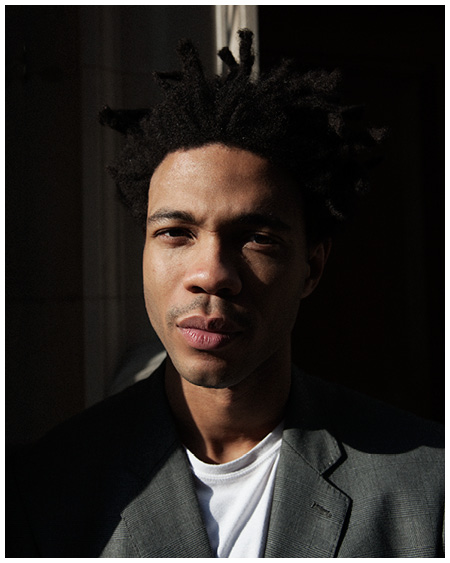
“Charlie, too, is all about ‘traditional with a twist’.”
But, true to form, Charlie enjoys fusing different sartorial approaches based on cultural and social circumstances: “Yes, I love to sample both ends of the spectrum, so the Prince of Wales check came from my interest in Edward, the former Duke of Windsor. I guess I’m taking elements from sportswear and country pursuits and integrating them into formalwear.” Like all great collaborations, this one relied on both partner’s input: “I presented Michel with a swatch of fabric and he kind of came up with this idea of laser-etching leather. A lot of people think it’s velvet but it’s actually leather…”
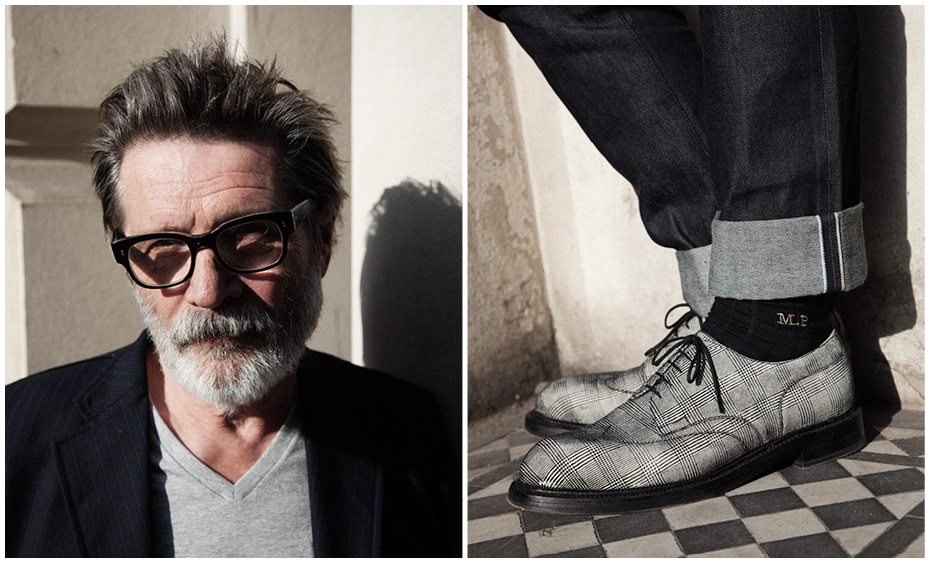
It’s not only the laser-etched leather and quilted loafer (“derived from the quilted slipper, an English-aristo reference for a J.M. Weston classic”) that challenges the notion of what the brand’s shoes should look like. Perhaps the stand-out piece from the collection is the chunky wing-tipped version with metal-looking leather trim, inspired by Teddy Boys. Initially Charlie wanted the footwear accessory to be made of actual metal but Michel, with his wealth of footwear design experience, stepped in with guidance.
Charlie explains, “this little detail came from that a lot of the skinheads used to rip off the toe cap of their boots to reveal the metal below as a way intimidating others.” But, like always, there is another side to the inspirational coin for Charlie. “At around the same time, in the early 80s, a lot of ‘Sloane Rangers’ were wearing slip-on loafers with metallic details on the front and then metal on the back.”I just liked that at the same time you had these two totally different worlds using the same technique, so this was our interpretation of that kind of aesthetic statement.”
So, looking back at the year long process, what has Michel learnt, if anything? “What I take away is the vision that Charlie has presented the brand with. It’s important that new, young creators take an interest in brands such as J.M. Weston. The second thing is that it helps us to move forward in the mind of men who buy Weston shoes because this way they are getting used to new ways and forms.”
And you, Charlie? “You can’t put a metal trim on a shoe!”
Photography Harry Watts



